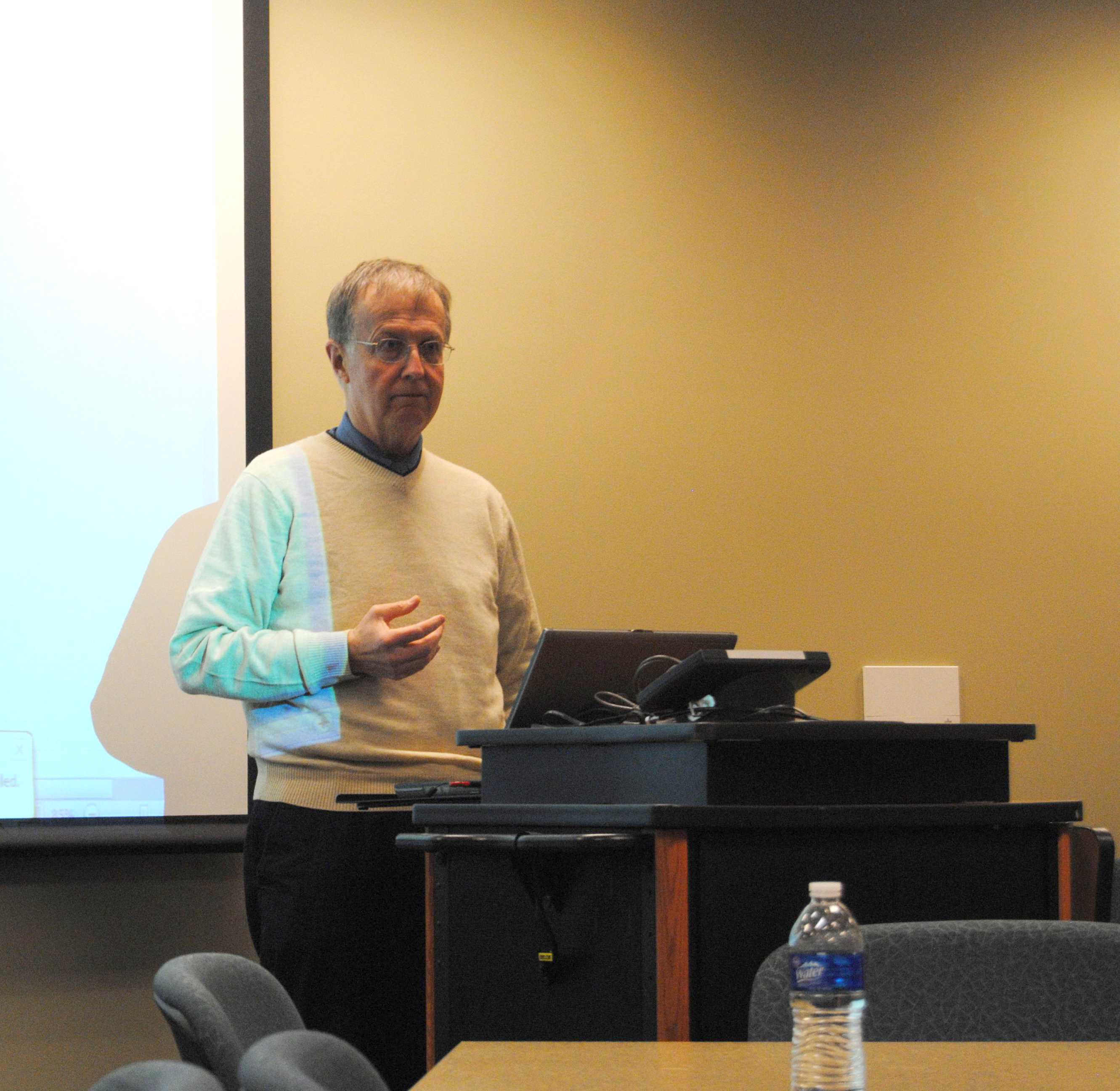
Tom Keefe, professor of business administration, presented the differences between the actual cost of living and how much the government suggests people pay during a financial workshop on Feb. 28.
Keefe took the students through the average cost of living, from college to retirement, by using actual expenses from attendees.
Using an Excel spreadsheet, Keefe took the average costs students said they paid and compared them to what the government said they should be paying.
“The government said you need $24,000 a year to live, which means you’re left with $1,500 a month for expenses,” Keefe said.
Keefe broke the expenses down between rent, utilities, transportation and personal expenses.
In every scenario, the average costs of living the students paid were more than the percentage the government suggests.
Some of the percentages were close. The government suggests paying 33 percent of the income on housing, while students pay 37 percent on average.
Students pay an average of 16 percent on food compared to 13 percent suggested.
Some of the percentages were substantially different. Students pay 17 percent on utilities compared to the 5 percent suggested. They pay an average of 18 percent on transportation costs compared to 10 percent suggested.
The biggest difference was in the personal expenses. This included clothing, medical expenses, vacations and eating meals at a restaurant. Students pay an average of 12 percent compared to the 2 percent the government suggests.
“Students have taught me to pay less than what you have,” Keefe said. “If you don’t have the money, don’t put it on your credit card like students tend to do.”
Keefe showed students in order to have $250,000 in savings to retire in 30 years, they would have to save $400 every month.
By AMANDA
CHIAMULERA
Staff
alchiamu@umail.iu.edu






